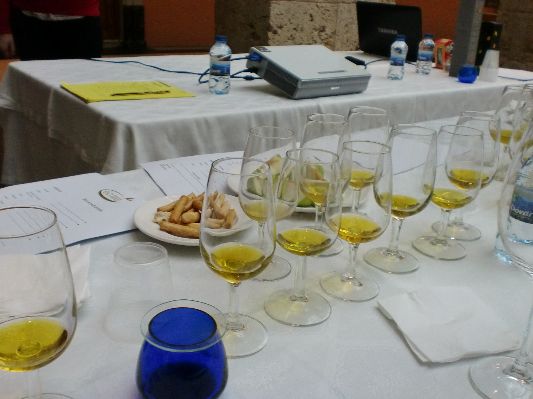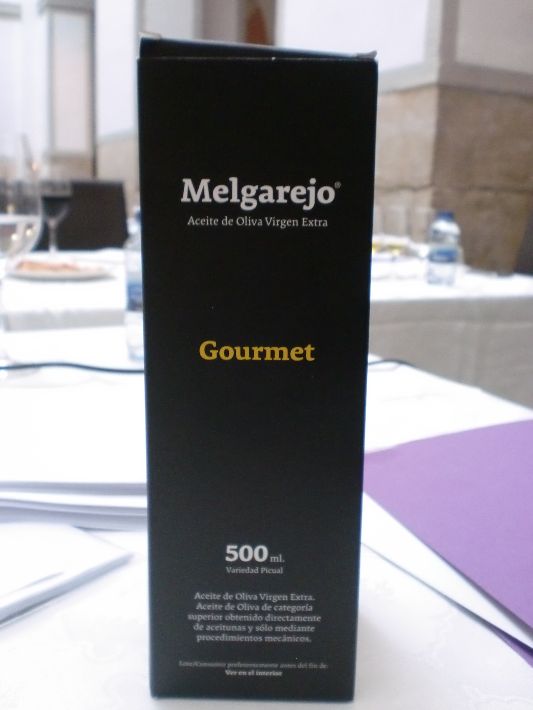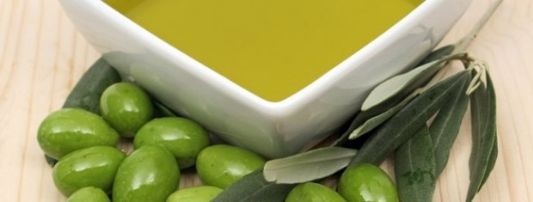If you have been reading my other articles you will have become familiar with the olive oil scene and what to be looking out for especially in terms of packaging, labels and tasting. You may be asking the question, where do I start with tasting if I don’t have any references? That is the starting point with olive oils; one needs to really know what an extra virgin olive oil tastes like. You might be saying to yourself, well I already know what an extra virgin olive oil tastes like! Which is the same as saying I know what good sex is like, when you’ve been doing it with the same person all your life! Well it might be true, you may have been lucky enough to have found your Christian Grey or unleashed your basic instinct first time round but the chances are most people need to experiment even if it is only a little bit!
Would you be surprised if I told you that the vast majority of the Spanish, Italians and Greeks have no idea what an extra virgin olive oil tastes like. Quite obviously three very monogamous societies! They all know what they like, but that is different to knowing what it tastes like. The problem is that they like what they have been consuming over the past decades, basically what they have been given and got used to, this is their reference point. However the problem is that they have become used to olive oil with organoleptic defects. So to continue one must loose their virginity to an authentic Extra Virgin!
It is important to remember that the rules that define an extra virgin olive oil were only established officially in 1985 by the International Olive Council and even then they weren’t really taken in serious until 2002, so we could say that Extra Virgin Olive Oil as we know it today is really only 10 years old! Where as olive oil as most know it is thousands of years old. Originally there was just olive oil (what we would now refer to as Virgin) and “lampante” olive oil (not suitable for direct consumption, what the romans used as lamp oil and is greatly consumed all over the country). The truth is that the general public couldn’t recognise an extra virgin, and really it is the only one, when educated on the subject, that you would want to consume. Why would you want to consume an olive oil that was made from fermented olives? Because for most, that is olive oil. This happens all over the Mediterranean, as it was common practise since the beginning of time. There wasn’t that rush to get the olives to the press, and in many cases it was the actual press that damaged the quality of the oils even further . There are areas in the south of France that deliberately make olive oil with fermented olives as it is what the locals demand, there taste buds have acquired that “fusty” taste. It also happens in Spain and Italy. Spain can have some extreme weather changes throughout the year and it is very common in certain areas for the olives to freeze with a sudden drop in temperature, naturally this ruins the fruit and gives the oil a taste like “earthy mushrooms” as the skin and the pulp has deteriorated, a tell tale sign is an olive with wrinkled skin. In the northern part of Spain near Lerida they deliberately make an olive oil called “Iced Oil” where they stack the olives in snow before taking them to the press, “to keep them fresh”, they say. They have got used to frozen olives and that is what they believe olive oil should taste like. What they are really doing is killing the olive and forcing the skin of the olive to set free all of it’s negative attributes such as wax and methanol which later mixes with the oil.
Just last week I was at a seminar on Extra Virgin olive oil in Segorbe, Valencia organised by my good friend Miguel Abad, agronomic specialist and master blender. It was lead by Juan Ramon Izquierdo; Biochemist, Director of the Olive Oil Laboratory and Olive Oil tasting panel for the Ministry of Agriculture in Spain. This man is the country’s leading expert on Olive Oil, Extra Virgin’s number one “protector”. He is to extra virgin olive oil as Mother Teresa was to the poor! He was the man that trained the Californian Tasting Panel and taught the Californians how to grow olives. At the seminar I was fortunate enough to taste a variety of exceptional olive oils and chat with various producers. These brands were absolutely fantastic “life changing” olive oils. When I say life changing, I mean once you have tried them it is impossible to dip your bread into the average rubbish you pick up at your local supermarket. So I thought I would share the best three with you. I call these types of brands “benchmark brands” as their quality is so easily identifiable they are ideal for learning what certain aromas should be like. Later you will detect it to a greater or lesser degree in other brands, but at least you will know what to smell and taste for.

Miguel Abad - Me - Juan Ramon Izquierdo - Rafael Arraiz

My favourite from the entire seminar and one I have tried a couple of times this year was “VENTA DEL BARON” by Mueloliva. This olive oil was just bursting with fruity aromas, even after a year, as all the samples were from last years harvest of course, so it was a very good test to evaluate the shelf life of it’s organoleptic qualities. Not surprisingly this olive oil won the 1st prize in the Ministry of Agriculture’s Competition last year. You could smell the green unripe fruity smell from the other side of the table, quite amazing. If you were ever wandering how olive oil can smell like cut grass or dew on a spring morning, just smell this oil. It also has a distinct note of green tomato and green apple. It is mildly bitter with a distinct fruity flavour and a perfectly balanced peppery note at the end, absolutely incredible. You really can smell all of this and you do not need to have a trained nose, it just hits you in the face like an explosion of olives, I’m not pulling your leg or trying to be fancy, you instantly think, wow! That is from an olive tree! (The varieties used in this blend are Picudo and Hojiblanca, I'll be writing an article on Spanish varieties shortly)
.JPG)
The next choice was “MELGAREJO” another fantastic Olive Oil, which has won numerous, prizes as well. A family run estate, which has been producing fine oils in Sierra Mágina in Jaen since 1780. We tasted the “Gourmet” version, which is made from the Picual variety. Once again a very rounded olive oil, with distinct notes of green unripe olives and freshly cut grass. It is slightly more bitter than Venta del Baron and has a well-balanced peppery finish due to the variety used, Picual, which can be very high in polyphenols. It is a limited production olive oil, which also boasts a slight aroma of banana and apple. The oil once pressed is stored in stainless steel deposits filled with nitrogen to avoid any aerobic oxidation.
.JPG)

Lastly “ABBAE DE QUEILES” is a unique organic extra virgin olive oil that is produced by Hacienda Queiles. It is located in the valley of Queilles in southern Navarra that is 2500 meters above sea level. This, being coupled with a very fertile soil makes it the ideal climate for organic olive tree farming. Due to the altitude there are no olive flies, the main plague that affects olive trees. This organic olive oil won the Ministry of Agriculture’s prize for the best organic olive oil last year, and quite simply it is one of the few organic olive oils really worth consuming. To produce high quality Organic olive oil it is extremely difficult. It has a very balanced and pleasant taste. It is totally the opposite to the previous two olive oils. It is made from the Aberquina variety and is generally a “sweet” extra virgin (i.e. not bitter or peppery). A very fruity olive oil, which is more “mature” than “green” and has a strong aroma, that reminds you of tropical fruits and banana skin, really quite special. It isn’t at all bitter or peppery, characteristics of the Aberquina, however it was slightly noticeable that it was a year old. The aromas and taste were slightly more mature than it would have originally tasted at the time of harvest. Given the time, it has aged very well indeed. Abbae is really a fantastically original olive oil. If you are lucky enough to find any of them, as I am not sure where they are available in the UK (I’ll try and find out) I am convinced that you will be completely taken by them. I will be posting a selection of more readily available olive oils (in the Uk aswell) very shortly. Enjoy!
.JPG)

Other popular Olive Oil Articles by Ian Mackay ©
Go to article: The World of Olive Oil - Introduction-Part 1
Go to article: The World of Olive Oil- Olive Oil Categories-Part 2
Go to article: The World of Olive Oil - How to recognise an authentic extra virgin olive oil - Part 3
Go to article: The World of Olive Oil - Olive Oil Tasting - Part 4
Go to article: Can I fry with Oilve Oil?
Go to article: The perfect Crime Scene